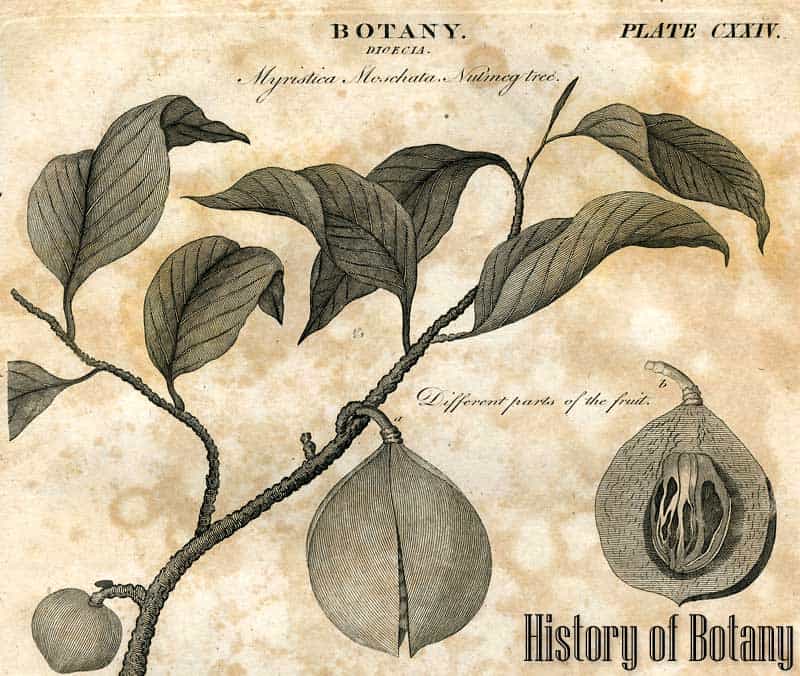 Botany is the systematic and scientific study of plants. This field focuses on their structure and biochemistry, the physiological processes that occur in them, as their relationships with the environment and other organisms.
Botany is the systematic and scientific study of plants. This field focuses on their structure and biochemistry, the physiological processes that occur in them, as their relationships with the environment and other organisms.
The history of botany goes back to 4th-century B.C.E. Man’s curiosity about plants led to many discoveries in Botany which shaped our current lives in many ways. At present, various sub-fields of botany have already emerged. These include plant pathology, plant ecology, paleobotany, and forensic botany.
But despite being established as a discipline, the term “plant” definition remains vague and still up for more clarification. Botanists often describe plants more inclusively with multicellular, eukaryotic organisms that do not have sensory organs and have, when complete, root, stem, and leaves.
History of Botany – A Timeline
During the Pre-17th Century
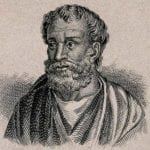 4th Century B.C.E: Both Aristotle and Theophrastus got involved in identifying plants and describing them. Because of his contributions, Theophrastus was hailed as the “Father of botany” because of his two surviving works on plant studies. Although Aristotle also wrote about plants, he received more recognition for his studies of animals.
4th Century B.C.E: Both Aristotle and Theophrastus got involved in identifying plants and describing them. Because of his contributions, Theophrastus was hailed as the “Father of botany” because of his two surviving works on plant studies. Although Aristotle also wrote about plants, he received more recognition for his studies of animals.
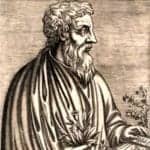 In A.D. 60: Dioscorides wrote De Materia Medica. This work described a thousand medicines, most of which came from plants. For 1500 years, it remained the guidebook on medicines in the Western world until the invention of the compound microscope.
In A.D. 60: Dioscorides wrote De Materia Medica. This work described a thousand medicines, most of which came from plants. For 1500 years, it remained the guidebook on medicines in the Western world until the invention of the compound microscope.
Quote: “Medicine sometimes grants health, sometimes destroys it, showing which plants are helpful, which harm.”
During the 17th Century
Early 17th century: For a brief period, the search for knowledge in the field of Botany temporarily became stagnant. However, the revival of learning during the European Renaissance renewed interest in plants.
The number of scientific publications increased.
 1640: Johannes van Helmont measured the uptake of water in a tree. Brittanica.com explains (refer to Major Experiments section) “In what is perhaps his best-known experiment, van Helmont placed a 5-pound (about 2.2-kg) willow in an earthen pot containing 200 pounds (about 90 kg) of dried soil, and over five years he added nothing to the pot but rainwater or distilled water. After five years, he found that the tree weighed 169 pounds (about 77 kg), while the soil had lost only 2 ounces (57 grams). He concluded that “164 pounds of wood, barks, and roots arose out of the water only,” and he had not even included the weight of the leaves that fell off every autumn.”
1640: Johannes van Helmont measured the uptake of water in a tree. Brittanica.com explains (refer to Major Experiments section) “In what is perhaps his best-known experiment, van Helmont placed a 5-pound (about 2.2-kg) willow in an earthen pot containing 200 pounds (about 90 kg) of dried soil, and over five years he added nothing to the pot but rainwater or distilled water. After five years, he found that the tree weighed 169 pounds (about 77 kg), while the soil had lost only 2 ounces (57 grams). He concluded that “164 pounds of wood, barks, and roots arose out of the water only,” and he had not even included the weight of the leaves that fell off every autumn.”
1665: Robert Hooke invented the microscope. Because of this, Robert Hooke had the chance to look closely at what a cell looks like. His description of these cells was published in Micrographia. However, the cells seen by Hooke showed no signs of the nucleus and other organelles found in most living cells (Rhoads 2007).
 1674: Anton van Leeuwenhoek saw a live cell under a microscope. Before his discovery, the existence of single-celled organisms was unknown and initially met with skepticism.
1674: Anton van Leeuwenhoek saw a live cell under a microscope. Before his discovery, the existence of single-celled organisms was unknown and initially met with skepticism.
1686: John Ray published his book, Historia Plantarum. This became an important step toward modern taxonomy (Arber 2010).
 1694: Rudolf Camerarius established plant sexuality in his book entitled De Sexu Plantarum Epistola. There, he stated that: “No ovules of plants could ever develop into seeds from the female style and ovary without first being prepared by the pollen from the stamens, the male sexual organs of the plant“.
1694: Rudolf Camerarius established plant sexuality in his book entitled De Sexu Plantarum Epistola. There, he stated that: “No ovules of plants could ever develop into seeds from the female style and ovary without first being prepared by the pollen from the stamens, the male sexual organs of the plant“.
During the 18th Century
 1727: Stephen Hales successfully established plant physiology as a science. He published his experiments dealing with the nutrition and respiration of plants in his publication entitled Vegetable Staticks. He developed techniques to measure area, mass, volume, temperature, pressure, and even gravity in plants.
1727: Stephen Hales successfully established plant physiology as a science. He published his experiments dealing with the nutrition and respiration of plants in his publication entitled Vegetable Staticks. He developed techniques to measure area, mass, volume, temperature, pressure, and even gravity in plants.
 1758: Carolus Linnaeus (Carl von Linne), the “Father of Taxonomy“, introduced the science of taxonomy which deals with the identification, nomenclature, description, and classification of organisms (species). His classification is based on species being the smallest unit, and each species (taxon) is under a higher category (Farabee 2001).
1758: Carolus Linnaeus (Carl von Linne), the “Father of Taxonomy“, introduced the science of taxonomy which deals with the identification, nomenclature, description, and classification of organisms (species). His classification is based on species being the smallest unit, and each species (taxon) is under a higher category (Farabee 2001).
1760s: Botany became even more widespread among educated women who painted plants, attended classes on plant classification, and collected herbarium specimens. However, their study focused on the healing properties of plants rather than plant reproduction. Women began publishing on botanical topics, and children’s books on botany appeared (Mason 2016).
The prize resulting from the period of exploration was accumulated in gardens and herbaria. And the task of systematically cataloging them was left to the taxonomists.
 Later part of the eighteenth century: Joseph Priestley laid the foundation for the chemical analysis of plant metabolism. Joseph Priestley published his works as Experiments and Observations on Different Kinds of Air in 1774. The published paper demonstrated that green plants absorb “fixed air” (carbon dioxide) from the atmosphere, give off “gas” or “dephlogisticated air”, which is now known as oxygen, and that this gas is essential to animal life (Rook 1964).
Later part of the eighteenth century: Joseph Priestley laid the foundation for the chemical analysis of plant metabolism. Joseph Priestley published his works as Experiments and Observations on Different Kinds of Air in 1774. The published paper demonstrated that green plants absorb “fixed air” (carbon dioxide) from the atmosphere, give off “gas” or “dephlogisticated air”, which is now known as oxygen, and that this gas is essential to animal life (Rook 1964).
During the 19th Century
Early part of the nineteenth century: Progress in the study of plant fossils was made.
1818: Chlorophyll was discovered.
1840: Advances were made in the study of plant diseases because of the potato blight that killed potato crops in Ireland. This led to the further study of plant diseases (Richman 2016).
1847: The process of photosynthesis was first elucidated by Mayer. However, the exact and detailed mechanism remained a mystery until 1862.
1859: Charles Darwin proposed his theory of evolution and adaptation, or more commonly referred to as “survival of the fittest” (kenyon.edu 2016).
Charles Darwin and Alfred Russel Wallace collaborated. Darwin soon published his renowned and highly recognized book On the Origin of Species by Means of Natural Selection.
Around the same time, Gregor Mendel experimented with the inheritance among pea plants.
Gregor Mendel became the “Father of Genetics”.
1862: The exact mechanism of photosynthesis was discovered when it was observed that starch was formed in green cells only in the presence of light.
1865: The results of Mendel’s experiments in 1865 showed that both parents should pass distinct physical factors which code information to their offspring at conception. The offspring then inherits one unit for each trait from each of his parents (Richman 2016)
Twentieth Century up to the Present
Early 20th Century: The process of nitrogen fixation, nitrification, and ammonification was discovered.
1903: The two types of chlorophyll—a and b were discovered. Learn more here.
1936: Through his experiment, Alexander Oparin demonstrated the mechanism of the synthesis of organic matter from inorganic molecules. Refer to a controversial observation of his findings at later years.
1940s: Ecology became a separate discipline. Technology has helped specialists in botany to see and understand the three-dimensional nature of cells and the genetic engineering of plants. This greatly improved crops and products (Arber 2010).
Until the present, the study of plants continues as botanists try to understand plants’ structure, behavior, and cellular activities. This endeavor is to develop better crops, find new medicines, and explore ways of maintaining an ecological balance on Earth to sustain both plant and animal life (Mason 2016).
Top 12 Botany News For 2017
15 Latest Inventions in Botany For 2018
Top 10 BEST Botany Discoveries in 2019
Top 10 Botany News in 2020
Top 15 Botany News of 2021
Top 15 Botany News of 2022
References
- Arber, Agnes. “THE EARLY HISTORY OF BOTANY.” Herbals: Their Origin and Evolution, 2010: 1-2.
- Farabee, M. Development of the Evolutionary Theory. 2001. https://www2.estrellamountain.edu/faculty/farabee/biobk/BioBookEVOLI.html (accessed July 22, 2016).
- JRank Articles. e: Botany – History of botany – Plants, Plant, Study, and Century. 2016. http://science.jrank.org/pages/996/Botany.html (accessed July 24, 2016).
- kenyon.edu. History of Genetics. 2016. http://biology.kenyon.edu/courses/biol114/Chap01/history_genetics.html (accessed July 22, 2016).
- Kumar, Punam. Introduction to botany. 2016. http://www.peoi.org/Courses/Coursesen/bot/frame1.html (accessed July 23, 2016).
- Mason, M.G. Introduction to Botany. 2016. http://www.environmentalscience.org/botany (accessed July 23, 2016).
- Rhoads, Dan. History of Cell Biology. 2007. http://bitesizebio.com/166/history-of-cell-biology/ (accessed July 22, 2016).
- Richman, Vita. History of botany. 2016. http://science.jrank.org/pages/996/Botany.html (accessed July 23, 2016).
- ROOK A (ed.). 1964. The Origins and Growth of Biology. Harmondsworth, Middlesex: Penguin Books, Ltd. 403 p.


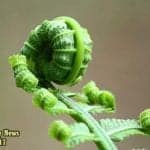
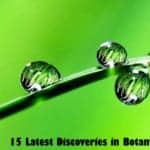



















[…] field of botany grew by leaps and bounds during this time. John Hooke invented the microscope, and Anton von […]